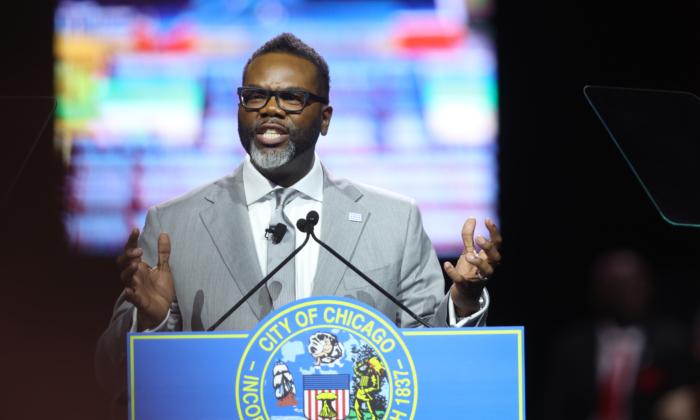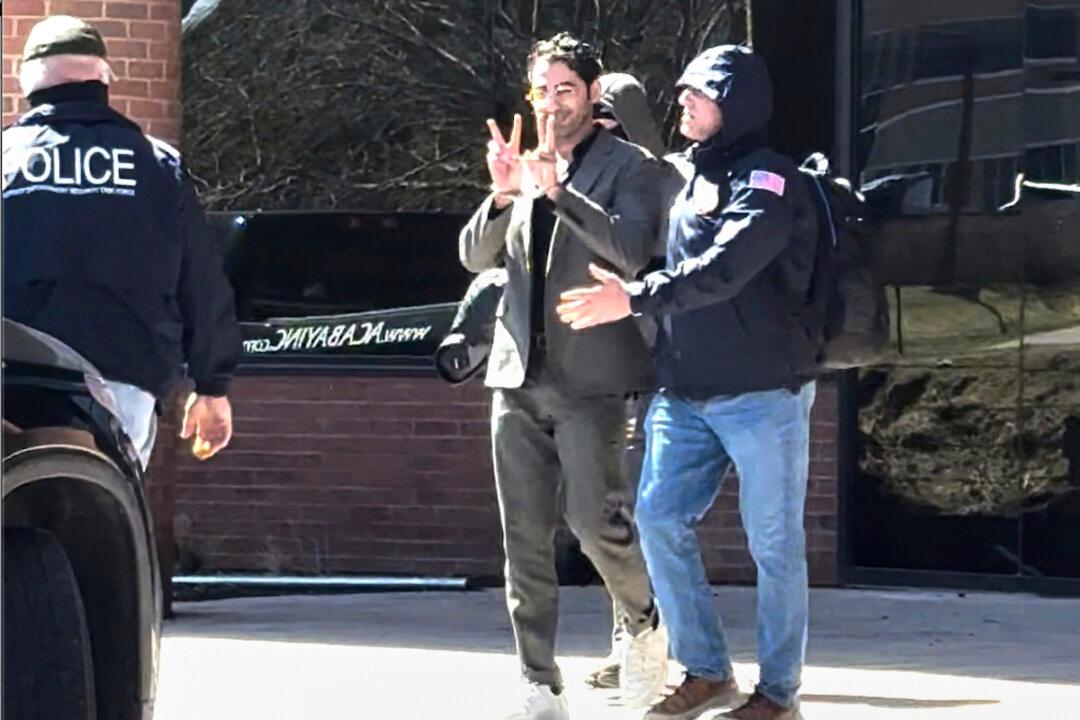Almost two months after he ascended to the fourth floor of City Hall, Chicago Mayor Brandon Johnson offered a victory lap for the left-wing activists, unions, politicians, and donors who helped get him elected.
Mr. Johnson and his allies announced its release on July 6 at Greater Harvest Baptist Church on the city’s South Side.
“Today is living proof that when we come together, build and run on our values, anything is possible, not just for the City of Chicago, but the rest of the globe,” Mr. Johnson said.

Mr. Johnson’s oratory at a South Side church may have been meant to evoke civil rights leaders like the Rev. Dr. Martin Luther King, Jr.
Others who spoke at Greater Harvest offered a clearer picture of what the new administration could have in mind when it comes to race and economics.
“You will not be able to instantly dismantle structural racism or challenge racial capitalism. However, you can pick a city that leads the way and serves as a model for the nation,” said Linda Rae Murray, co-chair of the committee’s health and human services subcommittee and former chief medical officer of the Cook County Department of Public Health.
Race at Center of Johnson’s Report
The report, which begins with a land acknowledgment, describes as its first value “the importance of the dual pillars of equity and inclusivity, and particularly racial justice.”It also typically capitalizes “black” while leaving “white” in lowercase.
The document also emphasizes the importance of “intersectionality” in its analysis, describing it as a “critical theme … borrowed from black feminist writers and activists.”
The report argues that the identities considered under intersectionality “are not in competition with one another” as “they are all intimately related.”
The mayoral transition report claims those public artworks “reinforce white supremacy and stereotypes of American Indians.”

Despite this evidence from the past, the report claims that “violence cannot be prevented or controlled without considering the entire range of violence against people in Chicago.”
“This includes the daily systems of violence rooted in protecting dominant white, heteronormative, ableist, and patriarchal power,” it adds.
The report’s “Public Safety” section begins by contending that: “American history is characterized by its exceptional levels of violence” without offering any additional context or evidence from other civilizations and cultures past or present.

One colorful cartoon graphic in a section on police staffing relates racial dynamics in rather blunt terms: “It’s hard to trust people who don’t look like you.”
While it’s hard to imagine such language being used to recommend an increase in white hiring to patrol white neighborhoods, the remainder of that subcommittee report makes it abundantly clear that the aim is to step up the hiring of black police.
“Evaluate the merit promotion process and eliminate barriers to hiring black police officers,” the document recommends.
An immigration subcommittee report calls for the city’s gang database to be erased.
Despite the report’s ideologically charged contents, Mr. Johnson presented himself as a uniter in his July 6 remarks at Greater Harvest.
Speakers Reflect Union-Driven Coalition
Mr. Johnson, formerly a paid organizer for the Chicago Teachers Union (CTU), was backed by that organization during the April runoff election that saw him defeat centrist liberal Vallas.Vallas was backed by Chicago’s Fraternal Order of Police, the city’s police union.
The leaders of various committees and subcommittees involved in creating the transition report spoke on July 6 at Greater Harvest.
“We must recognize the pivotal role that arts and culture play as an economic driver for the city of Chicago,” said Abby Pucker, co-chair of the arts and culture subcommittee.
Ms. Pritzker is a cousin of Democrat Illinois Governor J.B. Pritzker and Penny Pritzker, who served as commerce secretary under President Barack Obama.

“The very real possibility now exists for the long-overdue demand for a racially equitable system of education, with fully staffed and resourced schools that center the needs of those that have historically endured the brunt of disinvestment, which include black, Latine, immigrant and undocumented, disabled, unhoused, LGBT students, and students for whom English may not be their first language,” said community organizer Jhatayn “Jay” Travis, who co-chaired what she described as the “mighty” education subcommittee.
“A transformative district that supports people from birth to pre-K through college is now within our reach,” Ms. Travis said at Greater Harvest on July 6.
“No human is illegal,” said Andrea Ortiz-Landin, co-chair of the immigration subcommittee. She leads the Brighton Park Neighborhood Council, another recipient of CTU Foundation money.

Mr. Johnson also addressed some possible criticisms of the report’s timing.
“For those who are asking why it took so long, I don’t think it needs an explanation. But it’s because the people of Chicago are worth the time, the effort, and the deliberation to finally get it right,” he said.





